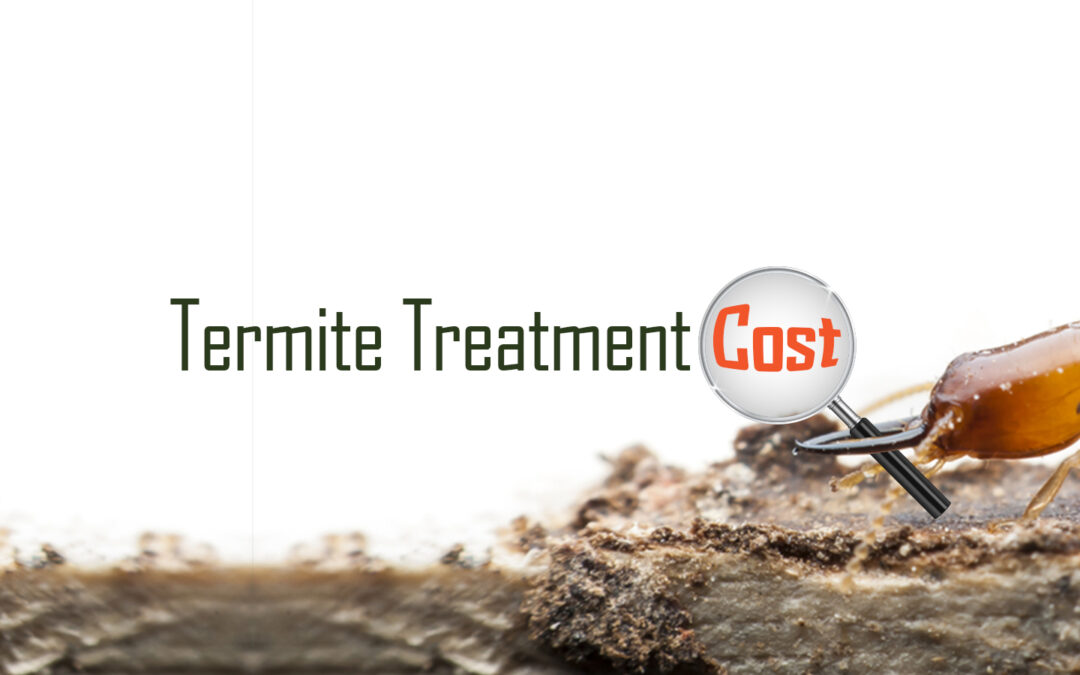Termites are among the most destructive insects, capable of devastating entire homes due to their proficiency in consuming wood and cellulose-based materials. These insects are not solitary creatures; they thrive in large, highly organized colonies composed of different classes, including workers, soldiers, and reproductive individuals. Each member has a specific role, contributing to the colony’s overall functioning. Typically, termite colonies are located underground, where they build intricate tunnel systems to reach food sources and maintain communication.
Termites are incredibly social insects, communicating through pheromones, sound vibrations, and physical contact to coordinate tasks such as food gathering, defense, and nest maintenance. Their ability to efficiently organize and persist in various environments makes them a significant threat to wooden structures. This article by Wham Bam explores various types of termites in Australia, their traits, and the costs linked to treating termite infestations. Knowing these costs is crucial for homeowners seeking to safeguard their properties efficiently. Wham Bam’s team of experts is well-equipped to handle all types of termites mentioned in this article, ensuring effective protection for homeowners.
WHAT ARE TERMITES?
Termite inspection are considered one of the most dangerous types of insects that can destroy entire homes, because termites are insects adept at consuming wood of any kind and cellulose-based materials. One of the most important characteristics of termites is that they cannot live alone or in small groups. Rather, termites can only live in large colonies consisting of different classes.
These colonies are highly organized because they are made up of different classes, including workers, soldiers, and reproductive individuals. Each individual in that colony has a specific role committed to them so that they contribute in an organized way to the overall functioning of the colony. These colonies are always located underground, and termites live inside tunnels built with precision to reach food sources and maintain communication. Given the complexity of their colonies, the termite treatment cost can vary significantly based on the extent of the infestation.
It is also known that termites are social insects to an indescribable degree, because they can communicate in many ways, such as communicating through pheromones. Pheromones are chemical substances that have special glands in termites, through which they can determine food paths, organize the division of labor, and summon individuals to perform certain tasks. They can also communicate through sound vibrations and physical contact. Due to their social nature and intricate communication methods, the cost of termite treatment often includes multiple inspections and follow-up treatments to ensure complete eradication.
Read More:
How to Get Rid of Bull Ants
Termite Inspections Costs
termite barrier concrete slab
Pre construction termite barrier
COMMON TYPES OF TERMITES
There are many types of white termites widespread in Australia, but there are 5 types that are the most common and famous:
1. Subterranean Termites:
Subterranean termites are one of the most famous and widespread species in Australia. This type of termite lives underground and builds mud tubes so that it can easily reach the food it needs from the surface of the earth. As usual, this type of termite feeds mainly on wood and cellulose. Subterranean termites are known for their destructive abilities, causing extensive damage to wooden structures and buildings.
2. Drywood Termites:
Drywood termites are also a very dangerous species. This type of termite does not necessarily come into contact with the soil like other types of termites because it can live entirely in dry wood, such as wooden furniture, doors, windows, and wooden ceilings. Drywood termites feed mainly on cellulose found in dry wood, causing significant damage to furniture and buildings.
3. Dampwood Termites:
Similar to Drywood Termites, this type of termite doesn’t require contact with soil to survive. However, unlike Drywood Termites, Dampwood Termites cannot inhabit dry wood. Instead, they thrive in wood that is consistently moist or decaying. As with other termites, Dampwood Termites feed on cellulose present in damp wood and can cause extensive damage to wooden structures and buildings.
4. Nasutitermes Termite:
Another common species found in Australia, Nasutitermes termites primarily inhabit tropical and subtropical environments. One notable characteristic of Nasutitermes is their construction of intricate nests using mud and decaying wood, often found on trees or man-made structures. Similar to other termite colonies, Nasutitermes colonies consist of various social classes including workers, soldiers, and reproductive individuals, each with distinct roles. Workers gather food and construct nests, while soldiers are responsible for colony defense, using specialized glands to produce a sticky substance to fend off attackers. Nasutitermes termites demonstrate remarkable adaptability, capable of living in trees, wooden structures, and soil.
5. Microcerotermes Termite:
Similar to previous species, Microcerotermes termites thrive in tropical environments with high humidity. They commonly build nests using damp or decaying wood. Characterized by their small size and light color, Microcerotermes termites primarily feed on wood and cellulose-rich materials.
At Wham Bam, our team of experts is well-equipped to handle all types of termites mentioned. With Wham Bam’s comprehensive knowledge and specialized treatments, we ensure effective protection against termites, giving homeowners peace of mind knowing their properties are in capable hands.
Get A Free Quote
HOW MUCH DOES TERMITE TREATMENT COST?
Since termites are destructive creatures, as we mentioned before, they must be eliminated as soon as they are discovered, before they worsen and become the cause of the destruction of buildings and disasters. In order to get rid of termites and ensure that your home or the building you are in is 100% protected, you must seek help from pest control companies, as they have specialized methods and techniques to eliminate termites.
When it comes to termite treatment cost, there are many factors upon which the price is based, such as the extent of the infestation, the level of damage caused by termites, and so on. Here are the details:

Termite Treatment & Control
The cost of termite treatment and control ranges from $599 to $800. This service comprises several stages. Initially, experts must inspect the entire house, inside and out, to assess the extent of termite infestation. Subsequently, a treatment plan is formulated and implemented to eradicate the termites effectively.
Following the initial assessment, the plan is executed using specialized chemicals to eliminate termites without causing harm to homeowners or their pets. Upon completion of the control process, the results are monitored to confirm the treatment’s effectiveness. Additionally, advice and instructions are provided to maintain the cleanliness of the treated area and reduce the chances of termites returning.

Termite Treatment by Baiting System
The cost of a Termite Baiting System ranges from $2,500 to $3,500. The termite baiting system involves several stages. First, specialists conduct a thorough examination of the entire house, inspecting it both inside and outside with the utmost precision to identify the locations and extent of the infestation and to determine possible entry points.
Next, specialists place bait for the termites around suspected areas to track their movement and pathways. Once the termites’ locations and movement patterns are identified, the cellulose bait is replaced with termite poison.

Termite Treatment Barrier
The cost of the termite barrier ranges from $2,800 to $3,500. The termite barrier service begins with the initial inspection phase, where experts visit the site and carefully examine it to identify damaged areas and areas that may be vulnerable to termite infestation in the future.
After that, experts clean all suspicious areas thoroughly to make them an unsuitable environment for termites. Then they build a barrier. This barrier consists of special chemicals applied to the soil around the foundations. These chemicals are used to prevent termites from getting close to the house or around it.
Wham Bam ensures transparency in pricing for our termite inspection service. For homes with 1-3 bedrooms, single storey, on a slab, the cost is $249. For properties with 4 or more bedrooms, double storey, on stumps, the price is $319. Larger properties with high value, extensive grounds, or multiple floors are priced starting at $399 and up.
Our comprehensive inspection service thoroughly examines both the interior and exterior of your property for any signs of termite activity. Wham Bam’s inspection process includes a visual assessment of critical areas such as the foundation, crawlspace, attic, beams, and the perimeter of the home. We look for telltale signs of termites, including mud tubes, damaged wood, and shed wings near windows or light sources. For interior spaces, Wham Bam checks baseboards, flooring, window frames, trim, and structural beams, using tapping tools and probing devices to detect hollow sounds and hidden damage. Advanced tools like Termatrac, Moisture Meters, and Borescopes may be used to inspect between walls and other hard-to-reach areas.
During the inspection, Wham Bam takes detailed photos, especially of high-risk areas and any signs of termite activity, to provide you with clear evidence and documentation. After the inspection, we compile our findings into a “Termite Inspection Report,” which includes photos, detailed descriptions of any evidence or risks of termites, and a “Termite Management Proposal” that outlines recommended treatments and provides a quote for barrier treatment if needed.
Protect your home with Wham Bam’s thorough and professional termite inspection service. Our detailed reports and expert recommendations will help you take the necessary steps to prevent or address any termite problems, ensuring your home remains safe and secure.
Additional Costs to Consider
When considering termite treatment, several additional costs may arise beyond the basic treatment price. Here are some potential extra expenses:

Repairs
First, repairs can be a significant expense. Termites can cause extensive damage to a building’s structure, leading to costly structural repairs. Additionally, damage to floors, walls, and other cosmetic aspects of the home may require professional repair services, adding to the overall termite treatment cost.
Sometimes, we need to arrange for a handyman to assist with minor probing or drilling required during a thorough termite inspection. This ensures that the integrity of your home is maintained and any minor damages are promptly repaired. This is one of the additional costs that must be considered alongside the termite inspection and treatment expenses.

Preventative Measures
Second, implementing preventative measures can also add to the expense. Installing physical or chemical barriers to prevent future termite infestations can be an added cost. Regular maintenance and monitoring plans to keep termites at bay might come with annual fees, ensuring continued protection.

Treatment Upgrades
Third, opting for treatment upgrades can increase the overall termite treatment cost. Advanced methods, such as baiting systems or heat treatments, might be more expensive. Eco-friendly treatment options, which are preferable for some homeowners, may also cost more than traditional chemical treatments.

Extent of Infestation
Fourth, the extent of the infestation is a crucial factor. More severe infestations require more extensive treatment, which can be more expensive. In some cases, multiple treatments might be necessary to fully eradicate the termites, increasing the overall Termite Treatment Cost Sydney.

Professional Expertise
Lastly, the level of professional expertise can affect the price. Hiring more experienced and reputable pest control companies might come at a higher cost due to their expertise and proven track record, but it can ensure more effective treatment and long-term protection.Wham Bam offers expert services at competitive prices, ensuring effective treatment and long-term protection for your property.
Conclusion
Understanding termites and the potential damage they can inflict is crucial for homeowners looking to protect their properties. These highly social and organized insects are capable of causing extensive destruction to wooden structures, making timely and effective treatment essential. This article has highlighted the various types of termites found in Australia, emphasizing their unique characteristics and the threats they pose.
When it comes to termite treatment with wham Bam Pest Control Sydney, costs can vary significantly based on factors such as the extent of infestation, the type of treatment method chosen, and additional preventative measures. Professional pest control services offer a range of solutions, from chemical treatments to advanced baiting systems and physical barriers, each with its associated costs. Homeowners also have the option of DIY treatments, both chemical and non-chemical, which can be more affordable but may require more effort and expertise.
Beyond the basic treatment costs, several additional expenses should be considered, including inspection fees, repair costs, preventative measures, and potential treatment upgrades. The geographic location and accessibility of the infestation site can also impact the overall cost.
By being aware of these factors and planning accordingly, homeowners can make informed decisions about termite treatment, ensuring effective eradication and long-term protection of their properties. Comprehensive Termite Management System Cost not only addresses current infestations but also includes preventative measures to safeguard against future invasions, ultimately preserving the integrity and value of the home.
Is termite protection mandatory in Sydney?
When constructing a termite barrier for your new residence, it’s essential to adhere to the regulations set forth by Australian Standards 3660.1, which mandate Sydney homeowners to install such barriers.
How long does a termite barrier last?
Modern chemical termite barriers last up to eight years, compared to older barriers which could last up to 30 years but were harmful to the environment and humans.
What factors influence termite treatment costs?
Several factors influence termite treatment costs, including the severity of the infestation, the size and design of the property, and the selected treatment method.
How do you treat termites yourself?
For effective termite control, use Nemesis or Sentricon bait for 4-6 weeks, apply Premise or Termidor dust for 2-3 weeks, insert insecticide into nests, and install a perimeter or subfloor barrier for long-term protection.
Is Termite Control Safe for your Family and Pets?
Termite baiting systems use secure stations to attract termites, containing a slow-acting substance that spreads through the colony, eliminating it. Safe for pets and kids, these systems effectively eradicate termites.
How often should you get a termite inspection in Australia?
Annual termite inspections are advised by Australian Standards. Frequency may increase based on location, past termite issues, and nearby properties. Inspections are crucial for property transactions.

Trackbacks/Pingbacks